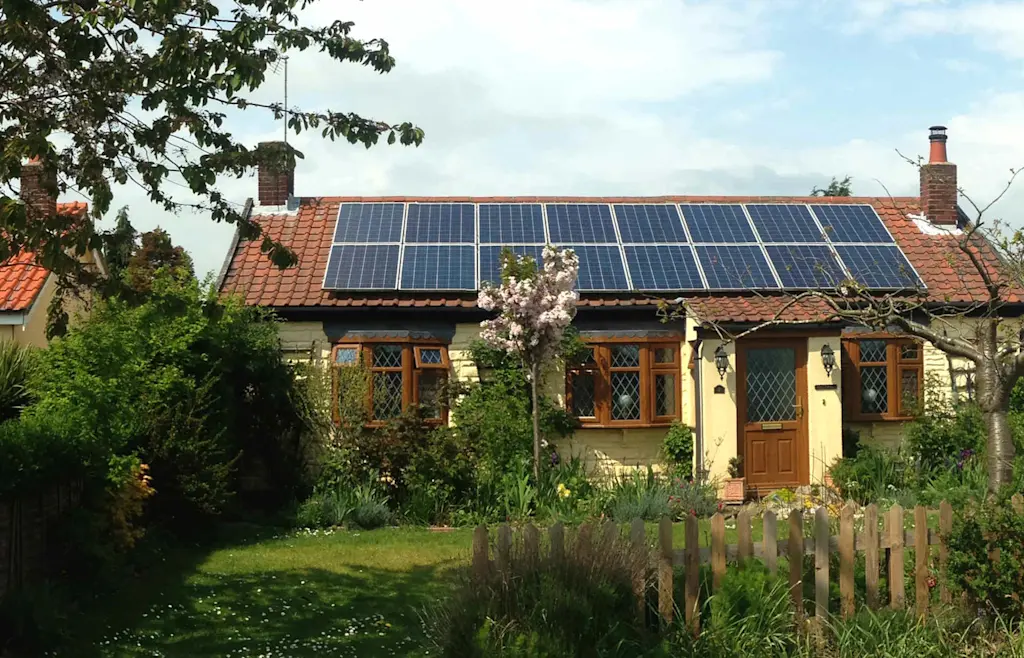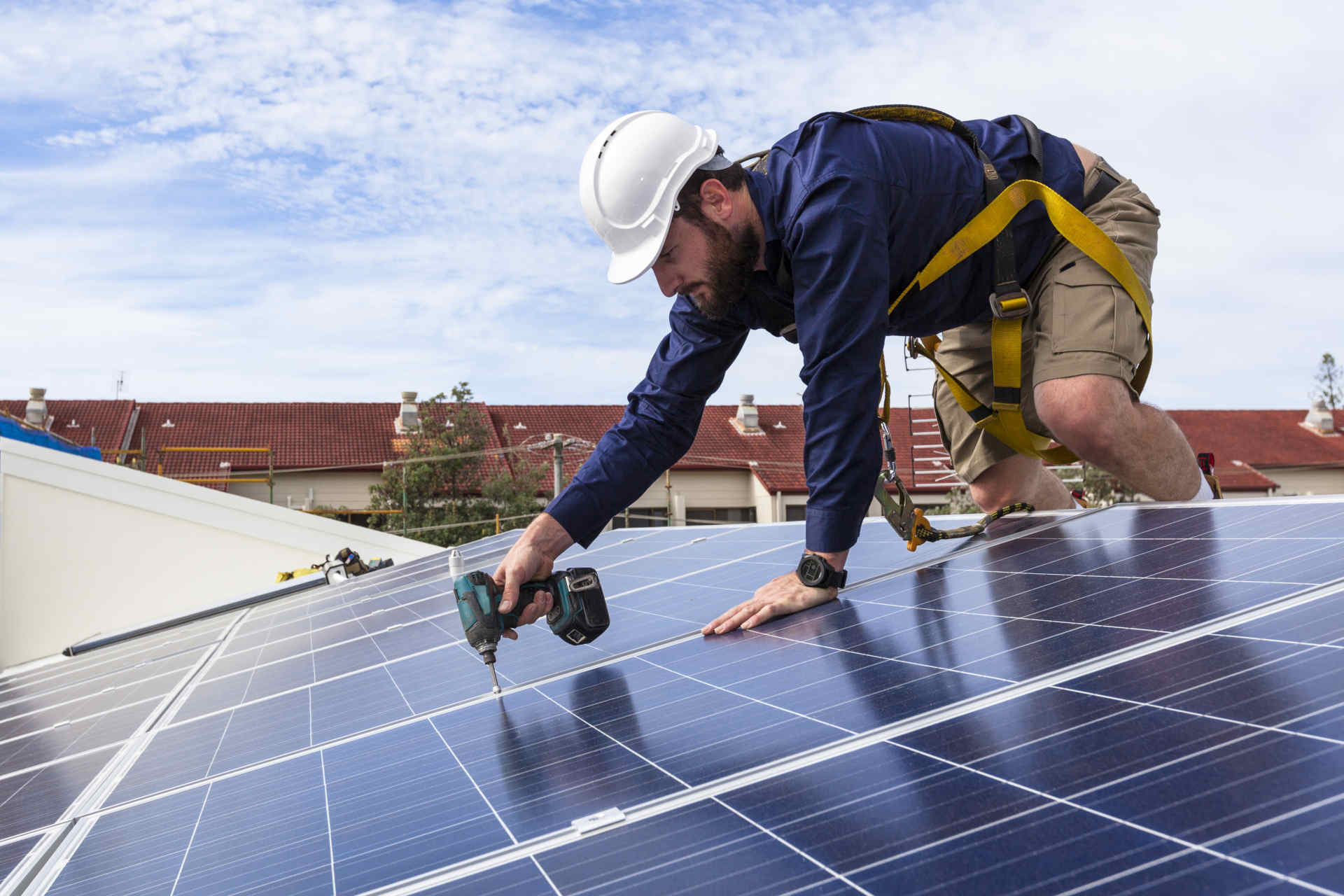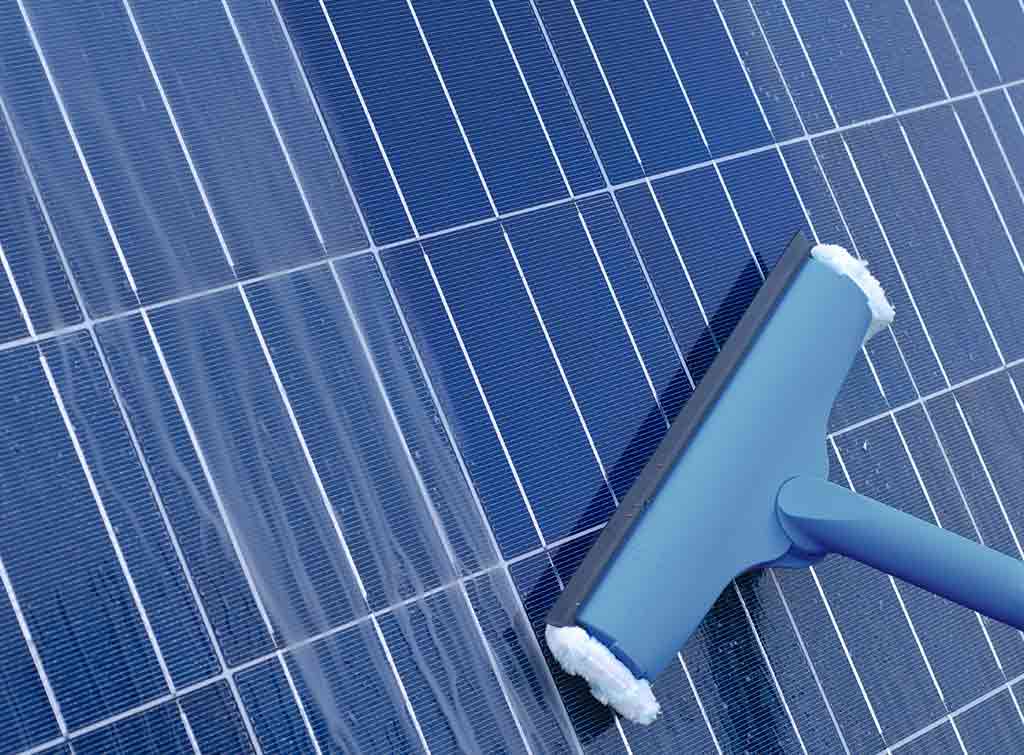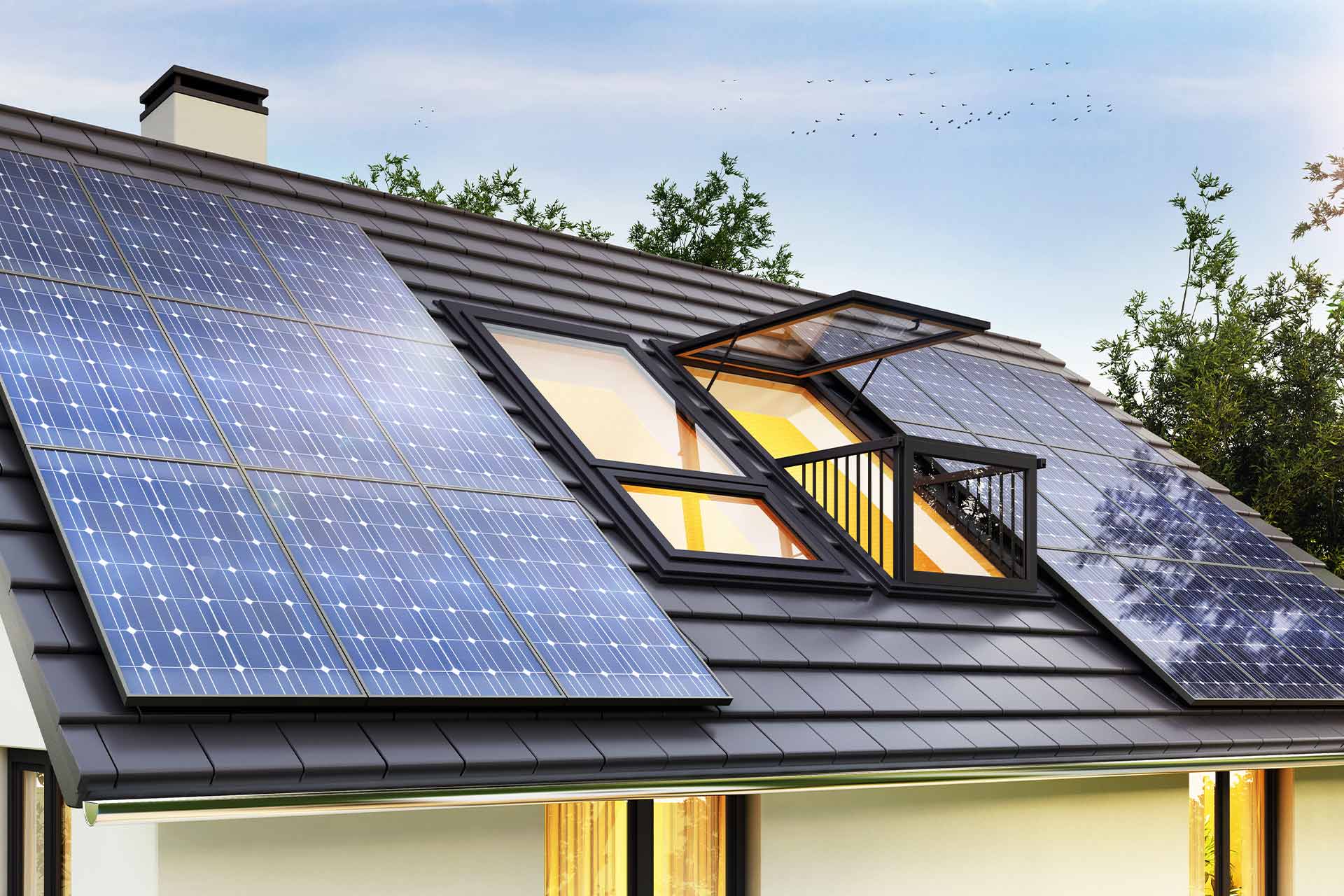Blog>Expert Advice>Solar energy: What you need to know about solar panels for your home
Last updated: 4 July 2025
Solar energy: What you need to know about solar panels for your home
Love the idea of generating your own power? Solar energy is a great way of saving money on your energy bills, reducing your reliance on mains electricity and is great for the planet. Here's all you need to know about this energy efficient home upgrade.

Although installing solar panels on your roof can be expensive, and can take a while to pay for itself, the environmental benefit is huge. It will greatly reduce your home's carbon footprint while reducing your energy bills.
Ready to get started? If you’re interested in taking a step towards solar energy, read on. We’ve put together a handy guide covering all the essentials you need to know. We’ll look at what solar panels are, how solar panels work, how much they cost, and how to find a certified installer.
See the tradespeople we've checked and recommend for your job
What is solar energy?
Solar energy comes from sunlight. The sun produces ultraviolet (UV), visible, and infrared rays of light, which we can convert into usable energy with the right technology. This is where solar panels come in.
Solar energy is a crucial source of free, renewable power that doesn’t harm the environment.
How does solar energy work?
When light from the sun reaches a solar panel, it is converted into energy using a particular process.
This process varies depending on the type of solar energy system being used. But generally speaking, it involves a reaction between the sun’s light and the silicon crystals on the surface of the solar panel. These panels are made up of solar photovoltaic (PV) cells, which are made from semiconducting materials such as silicon.
This produces an electric current, which can then be fed into the electrical systems in your home, storage batteries, or the National Grid.

Solar panels for your home
How do solar panels work?
There are a few different types of solar panels you can choose from. Most are photovoltaic (PV) solar panels that work in the same way as described above, but with different types of silicon, glass, and other components.
The main types of solar panels include monocrystalline solar panels, which are highly efficient but expensive, and polycrystalline solar panels. These are cheaper but have a shorter working life and lower efficiency.
What are the main types of solar panels?
The three main types of solar panels are:
Monocrystalline solar panels: These are the most efficient and most expensive type. They tend to convert more energy and get more from lower light levels. As they’re more efficient, these solar panels tend to require less space on your roof
Polycrystalline solar panels: These consist of cells where many silicone crystals are bonded together. They tend to be cheaper to produce and as such tend to be more affordable for homeowners to buy. However, they also tend to be less efficient and less durable than monocrystalline cells
Thin-film solar panels: These thin, flexible panels are less noticeable than monocrystalline or polycrystalline panels. They tend to be cheaper than other kinds of solar panels, but you'll usually pay a similar amount overall. You'll need more panels to cover a much bigger surface area to generate the same amount of energy
The flexibility of thin-film panels makes them suitable for many different uses. For instance, they can be moulded into solar roof tiles to give a seamless finish. Our solar roof tiles cost guide has more information.
Your installer may also give you a choice between plate and strengthened glass. Plate glass is the standard (and cheaper) solution, but strengthened glass will be less likely to be damaged and can even improve the efficiency of the silicon cells it is designed to protect.
What size solar panels do I need?
The right size of solar panels will depend on the size of your home and how much electricity you tend to use.
The power rating of panels varies by size and type:
Typical panels have a 0.25kWp rating (generating 0.25kW at peak levels)
Most domestic installations tend to be either 3kWp (12 panels) or 4kWp (16 panels)
For context, your kettle requires 3kW. Typically, installers expect panels to generate 80% of their peak capacity. So, at their best, if all the panels were generating well for 8 hours on a sunny summer’s day, you would create a maximum of 19 or 25kWh (kWh = kilowatts x hours generated) per day.
Installers also work based on around 50% of the generated electricity being unused in the home and exported to the grid depending on usage patterns.
A 3kW system would, therefore, typically produce around 2,600 kWh during a year
Half of which would be used in the home, and half exported (as the panels produce energy when you need it least)
A 4kW system might hope to produce around 3,400kWh over a year
According to OFGEM, the typical household uses:
Flat or 1-bed home (1-2 people): 1,800kWh per year
2-3 bed home (2-3 people): 2,700kWh per year
4+ bed home (4-5 people): 4,100kWh per year
Of course, these figures may be higher or lower depending on the usage in your particular household.

On Checkatrade, you'll only find trades who meet our high standards and pass up to 12 checks.
What does solar panel installation involve?
Solar panels are usually installed on your roof in a single day, unless you're having a particularly large system installed.
The area to be covered by the solar panel array will be cleared of tiles, and the solar panels will be fixed to the existing battens with aluminium brackets.
Solar panels tend to sit slightly proud of the roof, and certified installers will consider potential wind loading factors (this is only really an issue in exposed locations).
Step-by-step solar panel installation guide
Here are the steps your contractor will typically take to install your solar panels.
Erect the scaffolding – This is essential for the safety of the installation team (make sure to check the cost for scaffolding is included and that there’s enough room to put it up)
Attach roof anchors – The anchors are there to hold the frame for the solar panels, and the type of anchor used will be determined by the type of roof tile fitted
Attach the frame – The aluminium frame (or solar panel rails) attach to the anchors, which run vertically and horizontally across the roof
Install the solar panels – The panels clamp loosely to the frame, and then they’re tightened once the installer has positioned them at their optimal angle
Solar panel wiring – The panels usually come prewired from the manufacturer, but they still need to be connected to an inverter (an electrician will need to set this up in your house, for example in the loft)
Final checks – The electrician will make the final connections to the consumer unit and typically installs the generation meter near the fusebox
Receive Microgeneration Certification Scheme (MCS) – You’ll usually receive your certification within two or three days, once the installer has registered the solar installation with MCS
Shading and positioning
Shading
String inverters limit the output of the entire solar PV system to the performance of the worst-performing panel. So a slight shadow from a chimney, tree, or nearby lamp post will make a surprising amount of difference to your energy production over the year.
This issue can be overcome with an installation where the solar panels work individually, using either power optimisers or micro-inverters.
Positioning
The direction that your roof faces will influence how efficiently your panels can generate electricity.
Roofs that face south, south-west, and south-east are considered highly efficient due to the sun's position.
See the tradespeople we've checked and recommend for your job
The pros and cons of solar panels
Solar panels have many more advantages than drawbacks. However, it’s still important to consider both pros and cons carefully before taking the plunge.
Let’s start with the benefits of solar energy:
Eco-friendly: Solar panels produce renewable, sustainable, and clean energy, which can help to reduce your home’s carbon footprint. In fact, the Energy Saving Trust estimates that the average home solar panel system could save around one tonne of carbon per year, depending on where you live in the UK
Reduce energy bills: Generating solar energy is free. So, over time, solar panels will pay for themselves in terms of savings on your energy bills
Potentially increase property value: A solar energy system can be very attractive to potential buyers, who can benefit from free renewable energy without having to pay for the expense of getting them installed. It can also boost your home’s energy efficiency rating
Low maintenance costs: Once installed, solar panels are fairly low maintenance. An annual service is a good idea, usually costing in the region of £150
Now, what about drawbacks? Here are just a couple of disadvantages of solar panels to consider:
High initial cost: Solar panels aren’t cheap to buy and install, and it takes some time for the energy savings to outweigh the initial expense
Dependence on sunlight: Solar panels do work on cloudy days, but they don’t work at night. This means you’ll need to use a boiler or other power source, unless you have a battery to store the solar energy gathered during the day

We check the reviews on Checkatrade are from real people, and that trades meet our high standards.
How much do solar panels cost?
The cost of installing solar panels varies, depending on the type of system you go for and how many panels you have on your roof.
A 4kW photovoltaic (PV) system, suitable for a 2-3 bedroom house typically costs around £8,000 (this includes installation)
Including an inverter and solar battery takes the average cost to around £12,000
How much can solar panels save you on your energy bills?
Solar energy systems are expensive to buy and install. So, you need to weigh up this initial expense with the savings on your energy bills and the average payback period.
As a rough guide, you could save around £735 per year on your energy bills (based on a 4kW system) and earn up to £360 a year selling unused energy back to the National Grid
According to the Energy Saving Trust, the solar panel payback period with export payments can be anywhere between 11-21 years
See the tradespeople we've checked and recommend for your job
What solar panel grants are available?
There aren’t currently any specific solar panel grants, but there are several initiatives to help eligible households improve their energy efficiency.
Current green home grants and schemes include:
ECO4
ECO4 Flex
Warm Homes: Local Grants
0% VAT
Find out more in our solar panel grants article.
The Smart Export Guarantee (SEG)
You can also access the Smart Export Guarantee (SEG) scheme. This is a scheme run by the government that issues payments for any surplus solar energy you ‘export’ back to the National Grid.
Energy suppliers offer their own tariffs which pay a set rate per kWh of electricity you export, so it's wise to shop around for the best deal.
The SEG could help you save up to £360 a year. This can help you recoup the initial costs of installing your solar panels more quickly.

Tips for maximising solar panel efficiency
Opt for a high-efficiency type of solar panels — they may be a little more expensive, but they will be worth it in the long run
Position your solar panels on a south-facing roof and make sure they’re unshaded
Ensure your solar panels are clean, and serviced annually
Consider installing a battery to store energy captured during the day for use at night
Contact or pay a trade through Checkatrade and you’re covered by our 12-month guarantee of up to £1,000*

Find certified solar panel installers near you
It’s crucial to use a certified MSC installer for your solar panels. Choose one with experience in the system you’ve chosen, and in installations involving your kind of roof.
Search your postcode to find certified solar panel installers covering your local area.
See the tradespeople we've checked and recommend for your job
FAQs
Can I still switch energy suppliers if I have solar panels?
Yes, you can switch suppliers whenever you want to (provided you’re not locked into a fixed-term contract). You don’t have to stick to the same energy provider you were with when you got your panels fitted.
What maintenance do solar panels need?
You’ll need to get your solar panels professionally cleaned occasionally. A build-up of dirt and grime can affect their efficiency.
You’ll also need to replace the inverter around once every 10-12 years. Otherwise, apart from an annual service, your solar panels should last at least 25 years.
Is my home suitable for solar panels?
For your home to be a good fit for solar panels, you need two key things: enough space and a roof that faces the right direction.
The more space you have, the more panels you can install and the more power you can generate. According to The Renewable Energy Hub, a 4kW solar panel system needs around 20m² and should cover approximately 50-70% of the annual electricity needs for an average UK household.
Your roof should ideally have a pitch angle of around 30-40 degrees and face south, although east or west-facing roofs can still receive enough light.
Do I need planning permission for solar panels?
You shouldn’t need planning consent to install solar panels, as they usually fall within Permitted Development rules. But it’s always a good idea to check with your local authority, especially if you live within a conservation area or in a listed building.
See the tradespeople we've checked and recommend for your job
More Expert Advice Articles
More Solar Panel Installation Articles
See the tradespeople we've checked and recommend for your job





